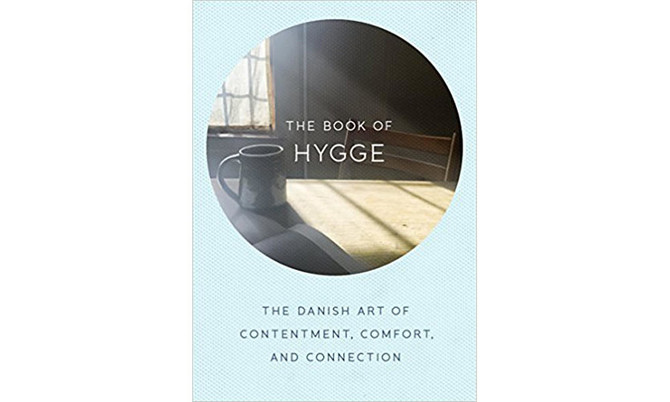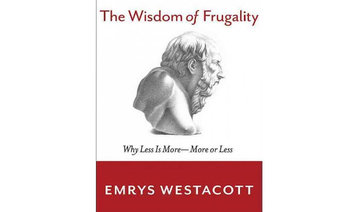Whether you have spent time on the Internet, watched television or read magazines and newspapers, you must have encountered the word “hygge.” Pronounced “hoo-gah,” the Danish art of feeling good has, particularly since 2016, been the subject of many books and articles.
The growing interest in this universal experience of relating to a place as well as to one another and feeling safe and comforted comes at a time of global instability, a time when hyper-connectivity has turned us into self-centered beings.
The buzz created around hygge also coincides with the UN World Happiness Report (WHR), which announced that Denmark, once again, ranked as the “happiest country in the world.” Yet Denmark is a country with high taxes and long dreary winters ‘so what is the secret behind the Danes’ happiness? Can we find it in hygge? Louisa Thomson Brits “hopes that, in reading this book, you will discover the hygge that already exists in your life and become attuned to its presence.”
The word “hygge” was in fact borrowed from the Norwegians. The concept is linked to the birth of modern Denmark, which was created after the break-up of the Danish empire that extended from Greenland to Iceland, encompassing Norway, southern Sweden, northern Germany and present-day Denmark and the Baltic Islands. The loss of a large territory inspired Nikolaj Frederik Severin Grundtvig to envision his project of 'folkeoplysning'. He believed that national identity was based on a sense of belonging and that Denmark should abandon invasive policies, and seek the well-being and education of all its citizens. The concept of hygge was born between the end of the 19th century and the turn of the 20th when the growing middle classes focused their interest on the comforts of home, domestic life and leisure. Hygge can be described in brief as a harmonious atmosphere, a feeling of warmth and a mood of contentment.
The essence of hygge is the sense and feeling of connection and belonging. Life in Denmark revolves around the community. Danes learn from an early age the importance of connection to their home and their streets. Hygge reflects the way we live in the smallest details. Habits — like the first coffee we drink in the morning, the special perfume we always wear — give us a sense of balance, rootedness and a feeling of well-being.
To hygge is to gather with friends or family members to celebrate the fleeting time or, in other words, to enjoy the moment. In Denmark, people generally gather around a table, and everyone has his own circle of friends. Hygge is about human connection and the family is the first gathering. Family is deeply ingrained in Danish culture. Hygge is a way of showing the members of our family that we care and that we have time to spend with them. We are connected to the whole world; yet many of us are too involved with our WhatsApp, Instagram, email and Facebook to see that our neighbors need some help. To hygge is about making the effort to give one’s time to people and create an atmosphere of tolerance and peace. And whatever the group, everyone has an express duty to include each and every member in a strong sense of relatedness and harmony. It is not accepted for anyone to galvanize the conversation for a long time. If a member of a group displays an inflated ego and takes himself too seriously, he is likely to be teased and warned.
“Within most Danes is a kernel of internalized sanction that keeps their behavior from sliding into self-indulgence or pomposity…There are diverse and subtle ways in which social order is maintained. The Danes are connoisseurs of guilt and commonly use it combined with gentle humor as a non-aggressive deterrent to uphold the quality of human relationships,” wrote Brits.
Hygge is a multi-layered concept where the sense of belonging vies with the experience of shelter and the feelings of comfort, well-being and simplicity. Shelter conveys our basic sense of security. Everyone yearns for a safe home.
Most buildings in Denmark are low rise and streets are wide enough to cross with ease. Large spaces are not seen as inviting. Danish homes are not only practical but they also take into consideration the changing seasons. They welcome the light but they also like to brighten their houses with fireplaces. Many Danes like to spend a weekend or a short vacation in a summerhouse beside the sea or in a cabin on the shore of a lake. The concept of hygge is also strongly linked to comfort, coziness and a relaxed frame of mind. The design of our homes and offices has focused lately more on how they look rather than how they feel. Hygge stresses the importance of handcrafted goods, understated comfort, warmth, natural materials and the use of light.
Danes relate warmth to goodness. Common symbols of hygge such as fireplaces, candlelight, newly baked buns and hot chocolate are connected with the feeling of warmth. Many Danes do not have a fireplace but they make up for it by burning candles. Throughout Scandinavia, candles are lit and placed on windowsills during winter months. And candles on a table convey the idea that we are sitting together.
Danes also give importance to the use of natural materials. The most popular building material is wood combined with stone, brick, copper and concrete. Wooden floors are covered with sisal matting or woolen carpets which exude a feeling of warmth. Danes have a preference for lightweight and mobile furniture that can be easily moved around to welcome unexpected guests. Everyday objects are considered important, and they must be practical and well-made. Special care is given to the design of chairs, which should be as comfortable as possible. Classic Danish coffee tables are elliptical and dining tables are round which draws people together and creates a congenial atmosphere. Danes value good design characterized by beauty, utility, simplicity and quality. Scent is most strongly linked to our emotions. In Denmark, a home is inviting when it smells clean and natural. Hygge is found in the natural smell of flowers, of freshly brewed coffee or newly baked cake.
In fact, sharing a meal is at the heart of hygge. Food in Denmark has always been linked to tradition and time spent in the company of family and friends. Smorrebrod, a typical informal lunch, is prepared in advance so that everyone can enjoy the meal at the same time. New Scandinavian cuisine places emphasis on ingredients that are local and typical of a region’s climate, soil, and water. It has also revived old techniques such as smoking, salting and marinating, and promotes production that is in harmony with the natural resources in fields, the sea, and in the wild.
After all has been said, hygge distinguishes itself by the simplicity it entails. Simplicity is a way of being. Danes enjoy a simple life rather than the visible consumption of branded goods. The concept of hygge is lost if we indulge in luxury goods. Hygge is not a question of qualifications or appearance, but it is about who we are and what we bring to the moment.
In Denmark, hygge is a feeling that “flourishes in any available space in life.” Louisa Thomsen Britts gives us an in-depth look into the art of hygge. It is all about enjoying every instant of every day and connecting with a place and with one another. “Hygge rekindles our awareness of the importance and pleasure of mutuality and celebrates our interconnectedness. It keeps us engaged with the lifelong task of living in intimate and loving relation to the world around us.”
Book Review: ‘The Book of Hygge’ provides insight into Danes’ unbridled happiness
Book Review: ‘The Book of Hygge’ provides insight into Danes’ unbridled happiness

Christmas Eve winner in Arkansas lands a $1.817 billion Powerball lottery jackpot

- The winning numbers were 04, 25, 31, 52 and 59, with the Powerball number being 19
- The last time someone won a Powerball jackpot on Christmas Eve was in 2011, Powerball said
ARKANSAS, USA: A Powerball ticket purchased at a gas station outside Little Rock, Arkansas, won a $1.817 billion jackpot in Wednesday’s Christmas Eve drawing, ending the lottery game’s three-month stretch without a top-prize winner.
The winning numbers were 04, 25, 31, 52 and 59, with the Powerball number being 19. The winning ticket was sold at a Murphy USA in Cabot, lottery officials in Arkansas said Thursday. No one answered the phone Thursday at the location, which was closed for Christmas. The community of roughly 27,000 people is 26 miles (42 kilometers) northeast of Little Rock.
Final ticket sales pushed the jackpot higher than previous expected, making it the second-largest in US history and the largest Powerball prize of 2025, according to www.powerball.com. The jackpot had a lump sum cash payment option of $834.9 million.
“Congratulations to the newest Powerball jackpot winner! This is truly an extraordinary, life-changing prize,” Matt Strawn, Powerball Product Group Chair and Iowa Lottery CEO, was quoted as saying by the website. “We also want to thank all the players who joined in this jackpot streak — every ticket purchased helps support public programs and services across the country.”
The prize followed 46 consecutive drawings in which no one matched all six numbers.
The last drawing with a jackpot winner was Sept. 6, when players in Missouri and Texas won $1.787 billion.
Organizers said it is the second time the Powerball jackpot has been won by a ticket sold in Arkansas. It first happened in 2010.
The last time someone won a Powerball jackpot on Christmas Eve was in 2011, Powerball said. The company added that the sweepstakes also has been won on Christmas Day four times, most recently in 2013.
Powerball’s odds of 1 in 292.2 million are designed to generate big jackpots, with prizes growing as they roll over when no one wins. Lottery officials note that the odds are far better for the game’s many smaller prizes.
“With the prize so high, I just bought one kind of impulsively. Why not?” Indianapolis glass artist Chris Winters said Wednesday.
Tickets cost $2, and the game is offered in 45 states plus Washington, D.C., Puerto Rico and the US Virgin Islands.














